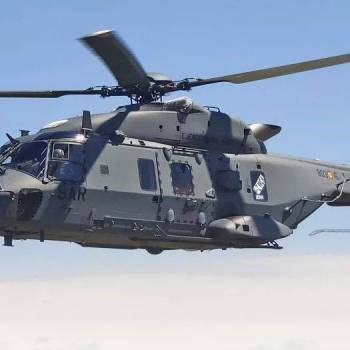
Fincantieri Marine Group’s MSV(L) candidate going ashore during the amphibious assault phase of Bold Alligator, a major multinational littoral warfare exercise hosted by the United States. Source: Fincantieri Marine Group
The US Army’s program to replace its aging fleet of 74-foot landing craft with a new model is officially under way. The service issued a Request for Proposal (RFP) to industry on Oct. 28 for a roughly 100-foot-long craft able to land an Abrams main battle tank directly onto a beach.
The new Maneuver Support Vessel (Light), or MSV(L), will replace dozens of Mike boats, a classic design that grew out of World War II’s emphasis on amphibious assault. Officially known as the Landing Craft Mechanized 8 Mod I or Mod II (LCM-8), the craft are used by the Army in myriad roles to move people and equipment around harbors and unimproved shores.
The MSV(L) will be bigger and faster than the old Mike boats. Army specifications call for a craft about 100 feet long, about 30 feet wide, drawing less than four feet, able to hit a top speed of at least 18 knots and travel 360 miles.
The Army requires the MSV(L) to have a payload of one M1A2 Abrams tank or two Stryker armored vehicles with slat armor or four joint light tactical vehicles with trailers. Existing Mike boats are unable to meet any of those payload requirements.
Army documents note the MSV(L) “would be furnished with a subsurface surveillance device, protection from small arms fire, and two Common Remotely Operated Weapon Stations for vessel defense and force protection, and to mitigate detection through reduction of thermal and acoustic signature.”
The Pentagon’s 2016 budget request includes $10 million to start the engineering, manufacturing and development phase and projects $18.6 million in 2017 and $14.5 million in 2018.
Following contract award, a prototype will be delivered to undergo testing before full-rate production begins. A 10-year indefinite delivery/indefinite quantity contract would cover three years of engineering and manufacturing development, two years of low rate initial production and five years of full production.
Source: Defence news, US Army.

Written by Patricia Ruiz
Patricia Ruiz is Environmental and Forestry Engineer and a Supply Chain Management Expert


